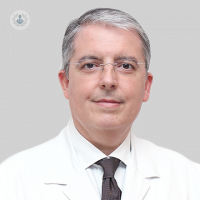Causes and treatment of aortic aneurysm
Written by:Dr. Vicente Riambau is vascular surgeon and belongs to Top Doctors, the select circle of top-notch medical Espana. As an expert in aortic aneurysm we explain the details of the surgery.
¿What is an aortic aneurysm and presents symptoms
?An aortic aneurysm is the dilation of the body's main artery called aorta. The most frequent serious infrarenal aortic aneurysm located in the abdominal area, followed by the popliteal artery aneurysm knee level and then the thoracic aortic aneurysm in the portion above the diaphragm comprises. No symptoms which is inconvenient because when they start to notice is probably due to the initiation of a break, so we would be ahead of an emergency situation in a very remote chance of survival. It is highly desirable, therefore, to detect these aneurysms in advance and be able to fix or repair before symptoms occur, before the rupture.
¿What are the causes and how you can prevent
?The causes of aortic aneurysms are varied but basically at something that everyone could agree that it would be the aging of the arteries. But there are also a number of factors that are predisposing, certainly the most important would be the consumption of snuff, smoking, followed by hypertension and hypercholesterolemia also. There aneurysms that are familiar, ie by birth defect, not well identified, but there are families of individuals with aortic aneurysms, abdominal or thoracic either. To prevent this it is best to detect these aneurysms by ultrasonography preform by Doppler sonography, and in patients who have some risk factors or a family history of aneurysms and that would usually male patients over 65 years, smokers and they have had a family history of aortic aneurysms. With an ultrasound can confirm or exclude the presence of an aortic aneurysm.
¿, as is his surgery and post -operative
?Currently there are 2 techniques that can be applied to patients with aortic aneurysms. One is the traditional or conventional open surgery, which involves the replacement of the aorta that is sick with a vascular prosthesis with manual suture and which is a major surgery that involves general anesthesia with blood transfusion and post- operative length of 30-40 days. The alternative is fortunately endovascular surgery that is newest addition to our therapeutic arsenal but allows the application of endoprostheses by catheterization technique, without opening the patient only with the application of endovascular prostheses with vascular fixation or autoanclado so automatic. There are also autosuturas allowing good fixation of the same. Both one and the other may be equally feasible in patients who are considering techniques of high complexity and should be performed in specialized centers. The medical or therapeutic technique is still far from our reach while being investigated for some drugs that can prevent the growth of the aorta.



